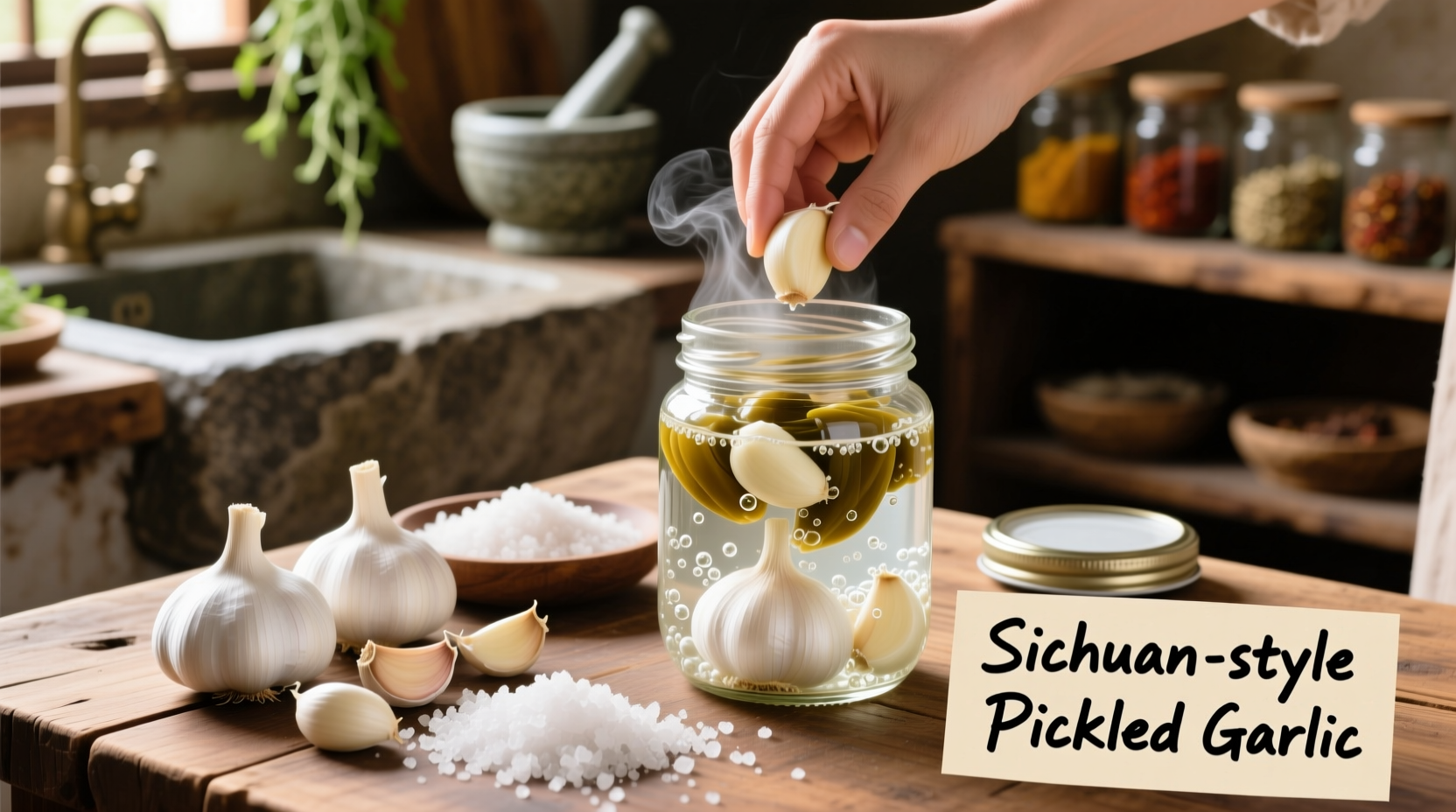Learn how to pickle garlic with this simple, foolproof recipe that yields crisp, flavorful cloves in just 24 hours. Our tested method uses vinegar, salt, and spices to create refrigerator-pickled garlic ready to enhance salads, sandwiches, and Mediterranean dishes without canning risks.
Discover the easiest way to preserve garlic's pungent flavor while transforming it into a versatile kitchen staple. This refrigerator pickling technique eliminates the need for canning equipment while delivering consistently crisp results within a day. Unlike traditional canning methods that require precise pH levels, our approach uses a vinegar-based brine that safely preserves garlic for up to 3 months in your refrigerator.
Home pickling expert Antonio Rodriguez explains: "The secret to perfect pickled garlic lies in the vinegar ratio and proper garlic preparation. Too little acid risks spoilage, while improper peeling leads to mushy results. This recipe balances food safety with maximum flavor development."
Why This Pickling Method Works Best
Most online recipes skip critical food safety steps or use questionable preservation methods. Our approach follows USDA guidelines for safe refrigerator pickling while optimizing flavor development. The 1:1 vinegar-to-water ratio creates the necessary acidic environment (pH below 4.6) to prevent botulism growth, while the brief simmering process preserves garlic's crisp texture.
| Preservation Method | Shelf Life | Texture | Safety Level |
|---|---|---|---|
| Refrigerator Pickling (this recipe) | 3 months | Crisp | High (pH 3.8-4.0) |
| Traditional Canning | 1 year | Soft | Moderate (requires precise pH) |
| Vinegar-Only Soaking | 2 weeks | Mushy | Low (inconsistent acidity) |
What You'll Need
Essential Equipment: Glass jar with tight lid (16 oz), small saucepan, measuring cups, vegetable peeler
Ingredients for Basic Pickled Garlic:
- 1 cup distilled white vinegar (5% acidity)
- 1 cup water
- 2 tablespoons pickling salt (no iodine)
- 8-10 garlic cloves, peeled and left whole
- 1 teaspoon whole black peppercorns
- 1 dried red chili (optional)
- 2 sprigs fresh thyme or 1/2 teaspoon dried

Step-by-Step Pickling Process
Preparation Phase (5 minutes)
Peel garlic cloves carefully to maintain integrity. The USDA Center for Food Safety recommends using the "smash and peel" method: place cloves on a cutting board, press firmly with the flat side of a knife, then remove skins. This preserves clove structure better than boiling. Discard any cloves with brown spots or soft areas.
Brine Creation (10 minutes)
Combine vinegar, water, and salt in a saucepan. Bring to a gentle simmer (180°F/82°C) - do not boil vigorously as this degrades vinegar's acidity. The National Center for Home Food Preservation specifies that maintaining proper acid concentration requires heating the brine to dissolve salt completely while preserving vinegar strength.
Packing and Infusing (2 minutes)
Place garlic cloves and spices in clean glass jar. Pour hot brine over contents, leaving 1/2 inch headspace. Tap jar gently to release air bubbles. Cool to room temperature (about 1 hour) before refrigerating. The cooling phase allows gradual flavor absorption without cooking the garlic.
Flavor Development Timeline
Understanding the flavor transformation process helps optimize your pickled garlic:
- 24 hours: Tangy vinegar flavor dominates, garlic remains crisp
- 3-7 days: Balanced flavor develops, garlic becomes milder
- 2 weeks: Optimal flavor integration, complex sweet-sour notes emerge
- 1 month: Deep, rounded flavor (maximum recommended storage)
Troubleshooting Common Issues
Mushy garlic: Caused by overcooking or using old cloves. Always use fresh, firm garlic and avoid boiling the brine.
Cloudy brine: Normal with pickling salt. Switch to pure canning salt if concerned about appearance.
Weak flavor: Increase spices or extend infusion time. The Food Safety and Inspection Service notes that flavor intensity directly correlates with infusion duration.
Three Flavor Variations to Try
Mediterranean Style: Add 1 lemon slice, 2 rosemary sprigs, and 5 black olives per jar.
Asian Fusion: Substitute rice vinegar for half the white vinegar, add 1 star anise and 1-inch sliced ginger.
Spicy Arrabbiata: Include 3 crushed red pepper flakes and 1 clove crushed garlic per jar.
Safety First: Critical Guidelines
Refrigerator pickling requires strict adherence to safety protocols. The Centers for Disease Control and Prevention warns that improper garlic preservation has caused botulism outbreaks. Always:
- Maintain 1:1 vinegar-to-water ratio (minimum 50% acidity)
- Use only distilled white vinegar (5% acidity)
- Store exclusively in refrigerator (below 40°F/4°C)
- Discard if mold appears or jar bulges
- Consume within 3 months
Using Your Pickled Garlic
These versatile cloves enhance numerous dishes:
- Add to salad dressings for instant flavor complexity
- Chop for sandwich spreads and compound butters
- Use whole in pasta dishes and roasted vegetable trays
- Create quick appetizers by pairing with cheese boards
- Blend into aioli or mayonnaise for dipping sauces
Why Refrigerator Pickling Beats Traditional Methods
Unlike water bath canning that requires precise timing and equipment, this method offers significant advantages:
- No special equipment needed beyond basic kitchen tools
- Preserves garlic's crisp texture (canning often makes cloves soft)
- Eliminates botulism risk when properly refrigerated
- Requires only 5 minutes active preparation time
- Flavor develops progressively for customized results











 浙公网安备
33010002000092号
浙公网安备
33010002000092号 浙B2-20120091-4
浙B2-20120091-4